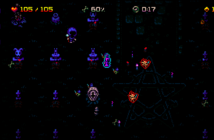
While many people may not be familiar with the name “Fire Emblem,” the video game franchise has certainly grown in popularity in the last decade since its introduction to the western part of the world in the famous “Super Smash Bros. Melee.” With the release of “Fire Emblem Awakening,” its popularity boomed and it has now joined the lines of Nintendo’s other large franchises like “Super Mario” and “The Legend of Zelda.” Because of this, high expectations were held for its newest entry, “Fire Emblem Fates,” which was developed by Intelligent Systems on the Nintendo 3DS. This all begs the question: does “Fire Emblem Fates” live up to the hype?
Before making that decision, it should be noted that “Fire Emblem Fates” is not one single, simple game. It consists of three different versions: “Birthright,” “Conquest,” and “Revelation.” “Birthright” is an easier game that allows players to level grind in-between story chapters, while “Conquest” is a more challenging experience that plays more straightforward with no extra chances to level grind. “Revelation,” however, is a third version that reveals many secrets hidden in the game’s story and lies in-between these two versions in terms of difficulty. It will only be released as DLC on March 10 unless a player owns the limited “Special Edition” which includes all three versions. However, it is highly recommended that players start with either “Birthright” or “Conquest” before playing “Revelation.”
Though it seems to follow the Pokémon effect of releasing multiple editions of a game, all three of these versions vary heavily from each other in terms of levels and story rather than minor changes. Additionally, despite there being multiple versions, each story does feel like a full game rather than a portion, though each play largely the same.
For reference, this review is heavily based on the experience of “Birthright,” but with enough experience from “Conquest” so individuals who decide to play that version will not miss out from this review.
Regardless of the version played, each game starts out the same—the player is a prince/princess (depending on how the main character is customized) who lives with the royal family of the secluded kingdom Nohr. When the character is sent on a mission, he/she ends up in the open and friendly kingdom of Hoshido. As it turns out, the main protagonist actually came from the royal family of Hoshido, having been kidnapped by the Nohrians during childhood. At a certain point in the story, the player is forced to choose between returning to the family he/she grew up with in Nohr or staying with his/her birth family in Hoshido. By siding with Hoshido, the player goes along the “Birthright” path, and the vice versa leads down the “Conquest” path.
Regardless of the choice a player makes, the story develops well with plot points that make the player feel torn in betraying one side while siding with the other, helping him/her feel attached to both families rather well and bringing all the more guilt. It helps that many of the characters in these large casts—each varying depending on the version—have likable personalities, all which can be expanded upon with the support conversation mechanic, where characters bond by pairing up in-battle even up to the point of marriage. Without spoiling too much, “Fire Emblem Fates” doesn’t try to be the most innovative story, yet it certainly succeeds in being an emotionally moving one of wars destroying countries and their people, as well as one of families being torn apart.
As a game, “Fire Emblem Fates” falls under the genre of a strategy role-playing game, where the player can choose from a number of characters to fight against others on a map, taking turns to attack between themselves and the enemy. Each choice, such as moving a certain character or attacking specific enemies, becomes important, especially as the game gradually becomes harder and the stakes are raised. While “Birthright” focuses on simple objectives such as defeating all enemies or simply the boss of the area, “Conquest” requires more specific objectives such as guarding a certain area on the map for a definite amount of turns or taking over a map’s domain. These choices and strategies can be increasingly important depending on the difficulty chosen by the player, as well as the mode; specifically, Fire Emblem’s famous “Classic Mode”, in which once allies are defeated, they die off permanently. However, this frustration can be relieved if the player chooses “Casual Mode”—where allies are brought back after a battle—or the new “Phoenix Mode”—where allies are revived after the end of each turn.
Each version of “Fire Emblem Fates” contains about 30 main story chapters, with over 10 side chapters in addition, providing a large amount of content. It’s a pleasant surprise to see each of these maps have a variety of layouts and certain gimmicks such as the Dragon Vein mechanic that varies with each map, which may create shortcuts or damage enemies from afar. This helps make each one stand out rather than become repetitive, especially for such a long game. Furthermore, the changes to the core “Fire Emblem” battle system such as the weapon triangle (which determines which weapons are effective against others) and the variety of new warrior classes and weapons make “Fire Emblem Fates” stick out as a new entry of the series rather than a retreading of “Fire Emblem Awakening.”
All of this content doesn’t include the additional side Challenges that “Birthright” provides for level grinding, as well as the My Castle hub world in all versions. This offers additional interaction with characters, shops for weapons and items, customization for the area itself and for characters. It stands as a refreshing breather area between story chapters, which become especially long further in the game, and is overall a nice side feature for the series. With all of these factors included, a single play through of one version of “Fire Emblem Fates” can average around 50 hours, which provides a substantial amount of value.
“Fire Emblem Fates” is a gorgeous game to look at, taking place in a vibrant world with beautiful backgrounds and well-crafted character models, animated to be full of personality. A lot of detail has been put into this world and the skirmishes that occur in it, with warriors receiving noticeable damage to their armor that may break to pieces as well as buildings that are destroyed to rubble over time in-battle. The smooth transitions from the flat 2D maps into gorgeous 3D battle scenes are also stunning to watch each time, and are almost never tiring to look at. While these battles typically run steadily, the framerate sometimes will drop when larger character models are present. In-game cut-scenes are much more dynamic than that of “Fire Emblem Awakening,” providing many good action sequences.
Aside from the in-game visuals, “Fire Emblem Fates” has a number of animated computer generated cut-scenes, which have a nice stylistic choice that closely resembles traditional 2D animation and gives them the beautiful look of a moving painting. The animation itself is incredibly well done, and signifies pivotal moments in the story and for characters. Some single illustrations are also used for these moments, and they are also well drawn with nice lighting effects that make them pop. All of these elements together truly help bring the world and its inhabitants to life.
“Fire Emblem Fates” has a strong focus on music as well, and it’s clear that the composers put a lot of effort into a lot of these compositions. Many map themes help keep the player focused on the strategies to be made at hand, which add extra instruments when transitioning to the battles and making them all the more dramatic. General songs for cut-scenes are also well-designed to set the mood: be it somber, mysterious, joyful or inspiring. A majority of these songs are also based heavily off of the game’s main theme “Lost In Thoughts All Alone,” and these leitmotifs help with keeping the game’s soundtrack cohesive. This main lyrical song in question is also quite beautiful in itself, and is bound to stay with players even past the end credits.
With such a large cast of characters, “Fire Emblem Fates” also contains a large quantity of voice acting. Overall, the voice actors perform well, though a few lines sometimes fall flat and a few performances can come off as awkward. It is also disappointing that cut-scenes have yet to be fully voiced and instead will use shorter voice clips, many often re-used. This is not to say the acting is bad, but having a fully voiced game would simply be more impactful. It may also disappoint players that unlike its predecessor, “Fire Emblem Fates” lacks the choice of switching the voice track to the original Japanese actors, which can be a deal breaker for some fans of the genre. Still, that isn’t to dismiss some of the great efforts made by the English voice actors.
“Fire Emblem Fates” is undoubtedly among the best of the Nintendo 3DS’s huge RPG library. Despite there being three versions, it avoids the infamous Pokémon effect of being the same game three times, and instead each is its own full experience. They all share great tactical turn-based fun with an extensive amount of content for fans of the series and genre to enjoy, along with the large sets of unique and fun characters all part of some great, moving stories. The presentation of the game is absolutely stunning for its visuals and wonderful music, among the best in the series. Though with only a few missteps in its performance but still providing an incredible overall experience, “Fire Emblem Fates” earns the score of a 4.5/5.0.




